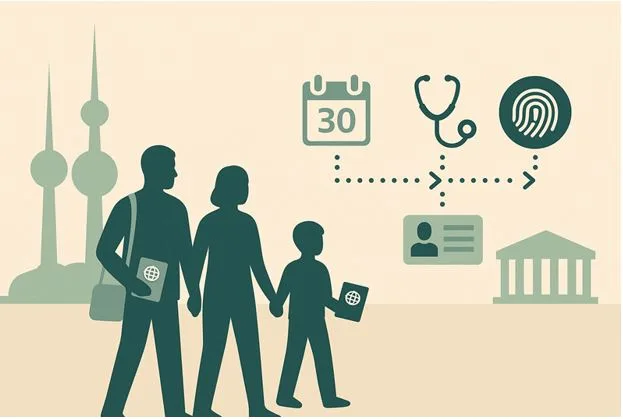The Ethics of AI-Generated Content: Where Do We Draw the Line?
Artificial Intelligence is no longer just a buzzword—it’s an active participant in the content creation world. From blogs and newsletters to ad copy and entire books, AI tools are being used by creators and marketers at scale.
But as AI becomes more advanced, we’re forced to ask a deeper question: Just because we can create content with AI, should we?
Let’s dive into the ethical challenges that come with this evolving landscape.
A Surge in AI-Generated Content
In recent years, AI writing tools like ChatGPT, Jasper, and Copy.ai have transformed how content is produced. According to Statista, over 80% of marketers used some form of AI in their content strategy in 2025. That number is expected to climb even higher by 2026.
The appeal is obvious: AI can generate thousands of words in seconds, helping teams meet deadlines, reduce costs, and scale faster than ever before.
But what happens to originality, credibility, and trust?
Who Owns AI-Generated Work?
One major gray area is intellectual property.
If an AI writes a blog post or composes a song, who owns it? The human who prompted it? The company that built the AI? Or no one at all?
The U.S. Copyright Office has repeatedly denied copyright protection for works entirely generated by AI without human intervention.
This creates a legal and ethical dilemma: businesses and creators are using AI content to monetize—but without clear ownership rights.
Authenticity and Deception
AI content often mimics human writing so well that readers can’t tell the difference. While this sounds impressive, it also raises concerns.
When audiences believe they’re consuming human-created content, but it’s actually AI-generated, is that deception?
Transparency matters. In a 2024 survey by Edelman Trust Barometer, 67% of respondents said they’re more likely to trust a brand that clearly discloses when AI was used to create content.
Yet most companies don’t disclose it at all.
The Rise of Misinformation
AI doesn’t know truth from fiction—it simply generates text based on patterns. That means it can produce false or misleading content without realizing it.
This is especially dangerous in areas like news, finance, and healthcare, where factual accuracy is critical.
A 2025 study by MIT Technology Review found that 29% of AI-generated news articles contained factual errors or misleading statements.
Without human oversight, the line between fact and fiction can easily blur.
Job Displacement in Creative Fields
AI-generated content also raises concerns about job security for writers, journalists, designers, and other creative professionals.
Why pay a content team when one AI tool can write a week’s worth of posts in an hour?
A PwC report estimated that up to 30% of jobs in content marketing could be automated by 2030.
While AI can enhance productivity, relying solely on it could devalue human creativity and expression. That’s a slippery slope.
Education and AI: A New Frontier
In schools and universities, AI is also changing how students approach assignments and essays. But is it helping or hurting?
If a student submits an AI-written paper, is it plagiarism? Is it cheating?
Some educators are turning to tools like an Ai detector to identify whether a piece of content was generated by a machine. But even detection tools are fallible—and students are getting smarter about how to avoid detection.
This creates an ongoing ethical arms race between creators, institutions, and the technology itself.
Bias in the Machine
AI models are trained on massive datasets from the internet—which means they also learn the biases, stereotypes, and prejudices embedded in that data.
This can lead to content that unintentionally reflects societal biases, even when creators don’t mean to cause harm.
For example, an AI writing tool might default to male pronouns in tech articles or reinforce cultural stereotypes when generating fictional characters.
As creators, we have a responsibility to monitor and correct these patterns.
Regulation vs. Responsibility
Currently, there’s no universal law governing the ethical use of AI-generated content. Regulation is lagging far behind innovation.
In the meantime, the responsibility falls on brands, creators, and platforms to set their own ethical standards.
That means asking tough questions like:
- Are we disclosing AI use in our content?
- Are we reviewing and fact-checking AI output?
- Are we putting human values above algorithmic convenience?
Waiting for laws to catch up could mean crossing ethical boundaries we can’t come back from.
Drawing the Line: A Human-AI Partnership
The ethical answer may not be to stop using AI—but to use it more responsibly.
AI should be a tool that supports human creativity, not one that replaces or misleads. The goal isn’t just speed or scale—it’s trust, integrity, and connection.
That’s the line we need to draw.
Creators who blend AI with human insight, originality, and empathy will be the ones who thrive in the long term.
Final Thoughts
AI has opened up exciting possibilities in content creation—but with great power comes great responsibility.
It’s not enough to ask what AI can do. We also need to ask what it should do.
Transparency, human oversight, and ethical intent must guide how we use these tools. Otherwise, we risk losing the very thing that makes content valuable: human truth.




